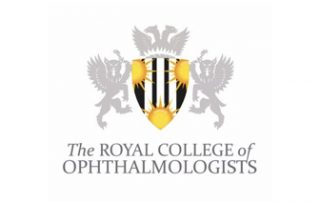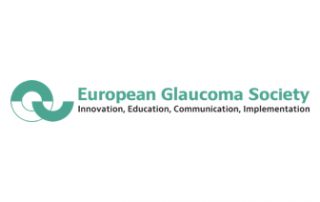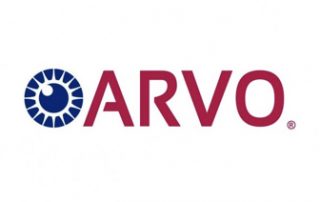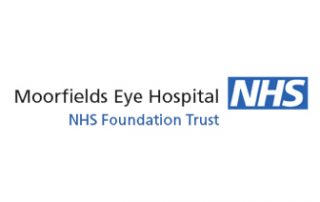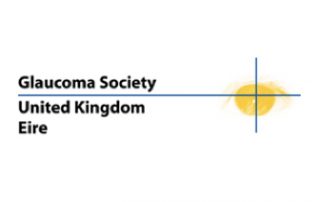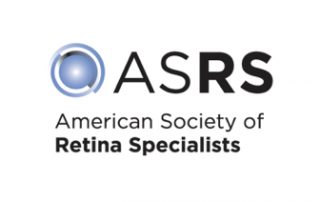Are you over 40 and haven’t had a comprehensive eye check done in the last year? A VisionSafe Eye Check can spot the signs of glaucoma before it silently steals your vision
Glaucoma treatment overview
The mainstay of glaucoma treatments is to reduce the intraocular pressure and to identify risk factors that could be increasing your intraocular pressure e.g. a cataract increasing the risk for angle closure glaucoma. If we recommend glaucoma treatment, the options might include:
- Medical glaucoma treatments
- Laser glaucoma treatments
- Surgical glaucoma treatments

How does glaucoma treatment help you?
Glaucoma treatments aim to stop or slow down (as much as possible) the potential for future damage to the optic nerve head and visual deterioration i.e. to preserve your current vision. Unfortunately, glaucoma treatments cannot restore optic nerve tissue or vision that you lose, so the sooner you get treatment for glaucoma, the better.

How do you know that glaucoma treatment is the right solution?
Your glaucoma treatment will depend on whether you have glaucoma, the type of glaucoma you have, and the severity of your glaucoma. Also, it is important to measure how quickly your glaucoma is changing since some patients deteriorate quickly & some patients deteriorate slowly. This is called the rate of deterioration (or change).
Assessing your glaucoma with regular testing will allow your consultant to measure this and therefore determine the best management plan for you.

Our Patients Say…

“Extremely personable and reassuring. Knowledgeable. Explained options.Successful treatment so far.”

“Most attentive and sympathetic to a patient as well as explaining carefully any procedures.”

“Brilliant! Highly recommend.”

“Very professional yet personal and friendly. Calm & reassuring environment and personal at all levels.”

“Dr Patel explained everything clearly and carefully. No feeling of rush or push to have more procedures. Very friendly & charming reception throughout the clinic.”

“Thank you to Dr P for recommending me. I travelled from Kent and it was an extremely thorough consultation.”

“Everything well explained – great care & understanding. Would thoroughly recommend.”

“I was dealt with very professionally with great care to detail and treated with great kindness. Thank you.”

“I am impressed! You are very thorough.”

“Fuss-free and efficient. Friendly and reassuring.”

“This is an extremely well-run clinic and the staff are kind, understanding and efficient.”

“Very thorough examination & informative discussion.”
How does glaucoma treatment work?
There are three main types of glaucoma treatment, which we’ll briefly discuss here.
Medical glaucoma treatments
Usually, eye drops to lower your intraocular pressure. There are an extensive range of eye drops to achieve this and are mostly the first choice to treat glaucoma. There are two modes of action:
- Eye drops that reduce intraocular pressure by decreasing the fluid production (called the aqueous humour) in the eye.
- Eye drops that reduce intraocular pressure by helping increase the exit of the fluid from the eye.
Mostly, one medication will be all that is required to achieve a significant intraocular pressure reduction. However, in some patients, a combination of drugs will be needed to achieve this, and a lot of the current choices consist of medications combined in 1 bottle. This approach is a good option when indicated since combining medications improves adherence to taking the medication and reduces side effects.
Regarding adherence and side effects, the vast majority of patients will learn to instil their eye drops easily and do not experience significant side effects. All eye drops will sting transiently. Also, we will provide you with information explaining the correct technique to instil eye drops. Once we initiate medical treatment, it is important to continue with regular follow up to measure that the intraocular pressure reduction has been maintained and is consistent. Your clinician will advise you on the recommended monitoring interval which we determine based on the type and severity of glaucoma that you have and whether it is stable or not.
Laser glaucoma treatments
There are two primary types of glaucoma laser treatments:
Laser Peripheral Iridotomy
This treatment is chosen to treat Angle Closure Glaucoma or those patients predisposed to this type of glaucoma. It involves a laser beam creating a small hole in the outer part of the iris (the coloured part of the eye).
In Angle Closure Glaucoma, the access (called the ‘angle’) for fluid to escape the eye has become blocked (angle closure) leading to high pressure in the eye. A sustained rise in pressure can cause permanent loss of sight and central vision. The iridotomy allows fluid to circulate more freely within the eye, minimising the risk of a sight-threatening pressure rise. We can perform this treatment in the outpatient setting as a day case procedure. The vast majority (80-90%) of patients will have their angle closure resolved after this treatment.
Selective Laser Trabeculoplasty
This treatment can be chosen to treat Open Angle Glaucoma or those patients predisposed to this type of glaucoma. Also if you are suffering from side effects associated with glaucoma eye drops, then this option can often enable the clinician to stop or reduce your medication. This approach is also a good first choice if the patient does not want to use eye drops.
This laser treatment works by opening up the drainage channels that control the outflow of the eye fluid and thus to allow more fluid to drain out. It seems to work by stimulating the cells in the trabecular meshwork drainage system to change and drain fluid more effectively. We can perform this treatment in the outpatient setting as a day case procedure.
An SLT can reduce the eye pressure by 25-30% and successfully controls eye pressure in about 70% of eyes one year after the laser treatment. However, its effect may fade with time, and therefore it may need to be repeated.
Surgical glaucoma treatments
There is a range of surgical treatments which are recommended depending on the type of and severity of glaucoma that the patient has.
Cataract surgery
In older age, the commonest reason to undergo this operation is to improve vision after vision has become blurred due to opacification of the lens inside the eye. However, this procedure can also be used to augment lowering intraocular pressure in Open Angle Glaucoma patients. And it is sometimes the treatment of choice for Angle Closure Glaucoma patients.
In patients with ocular hypertension (a risk factor for Open Angle Glaucoma), one large randomised controlled study found that there was about a 4 mmHg reduction in intraocular pressure after cataract surgery.
In Angle Closure Glaucoma, the access (called the ‘angle’) for fluid to escape the eye has become blocked (angle closure) leading to high pressure in the eye. A sustained rise in pressure can cause permanent loss of sight and central vision. Thickening of the ageing lens can encroach on the drainage angle of the eye narrowing it. Identifying this situation, removing the cataract and replacing it with a thinner artificial lens means that we can potentially resolve this risk factor.
Microinvasive Glaucoma Surgery
Micro invasive glaucoma surgery (MIGS) has become an increasingly important treatment option for some glaucoma patients for the past 5 to 10 years. This type of surgery aims to reduce intraocular pressure; in a less surgically traumatic way followed by less intense postoperative aftercare and more rapid rehabilitation compared to the well-established glaucoma operations such as trabeculectomy and tube surgery. Intraocular pressure reduction is the only proven treatment strategy to slow down and stop deterioration in glaucoma; therefore it is significantly advantageous to your clinician to have as wide a range of treatment options to consider.
The balance between aqueous humour production (the clear liquid inside the eye) and its outflow from the eye results in the intraocular pressure within the eye. The iStent (made by Glaukos®) is one of the MIGS options and is a device we implant into Schelm’s canal (part of the outflow or drainage system within the eye). It is designed to bypass the resistance of the trabecular meshwork, which has become abnormally high in some glaucoma patients. The rationale is that if we overcome this resistance, then the outflow of aqueous humour improves and intraocular pressure lowers. To date, more than 250,000 of this device have been implanted in patients worldwide since its initial development in 2002. It is the smallest device that we can implant in the human body. The iStent is made of titanium and is safe as far as other imaging tests are concerned including CTs and MRIs.
We can implant the iStent as a standalone operation, or combine it with a cataract operation. Studies conducted by numerous groups published in peer-reviewed journals have shown that this device is effective, i.e. a reduction of intraocular pressure is achieved in about 60-70% of patients with primary open angle glaucoma. The final intraocular pressure achieved can be somewhere in the mid teens, compared to a baseline intraocular pressure in the mid-20s. Also, there can be a reduction in medication usage by one bottle and 1-2 medications. The effect of this IOP reduction has been shown to last for up to 4 years so far.
The risks associated with implanting an iStent are similar to a cataract operation. A particular risk associated with this sort of device is postoperative bleeding which is less likely to occur during a cataract operation. The amount of bleeding is usually minimal and resolves after a few days. Also, there can be a transient intraocular pressure increase after the operation which might need some additional medication to settle this issue.
Lydia Chang has been performing this surgery since 2012, and to date, she has performed more than 200 of these operations (mostly with cataract surgery).
Lately, she was an invited speaker presenting on the evidence associated with this device at the World Glaucoma Congress in Helsinki in June 2017.
What she finds potentially beneficial about this treatment are as follows:
- Being able to offer some of her glaucoma patients an effective intraocular pressure lowering treatment, while reserving (and not prejudicing) more interventional glaucoma surgery for a later date if indicated.
- Being able to combine this treatment with cataract surgery at the same time.
- Being able to offer the appropriate glaucoma patients an effective surgical option that can (partially or entirely) reduce dependence on glaucoma eye drops.
- Being able to improve the quality of life of some of her glaucoma patients by reducing their glaucoma medications.
If you are interested in this treatment, Lydia Chang would need to assess your glaucoma, first of all, to determine whether this might be the right option for you.
Trabeculectomy
We recommend this kind of glaucoma surgery for the following reasons:
- If you have advanced severe glaucoma
- If we need to lower your intraocular pressure substantially and other treatments have not successfully achieved this
- If you have developed side effects to other treatments
This operation involves the creation of a new channel within the eye by removing a tiny piece of the wall of the eye, allowing the liquid that is causing the excess pressure to escape through a new opening into a reservoir (called a bleb) underneath the surface covering of the eye.

Latest news from your eye doctor in St Albans
We regularly share new videos and blog posts for our St Albans patients about common eye questions and concerns. You can subscribe at the bottom of this page to receive the latest updates.
Vision loss after 40: A VisionSafe Eye Check might catch signs of AMD, glaucoma, macular or retinal conditions.
Vision loss after the age of 40 is common, and there are several reasons this happens. One of the most prevalent reasons is an age-related change in our focusing which means we are not able to read small print easily without glasses (also known as presbyopia). However, there are more serious eye conditions which can lead to irreversible vision loss if not detected at an early stage.
What is glaucoma treatment and how does glaucoma treatment work?
There are different types of glaucoma treatments. The mainstay of glaucoma treatments is to reduce intraocular (eye) pressure to slow down or stop the disease from worsening.
What are common age-related eye problems and what are the symptoms?
The three big age-related eye problems that come to mind are cataract, glaucoma and macular degeneration. We often treat these age-related eye conditions here at Eyesight Clinic.
Memberships and affiliations
Our Consultant Ophthalmologists love to stay on top of the latest in eye treatment options for patients through regular industry meetings, journals and research.
Request a Call Back
Whether you’d like to book a VisionSafe Eye Check, or discover your eye treatment options, give us a call on: 01727 227 013 or request a call back below:




